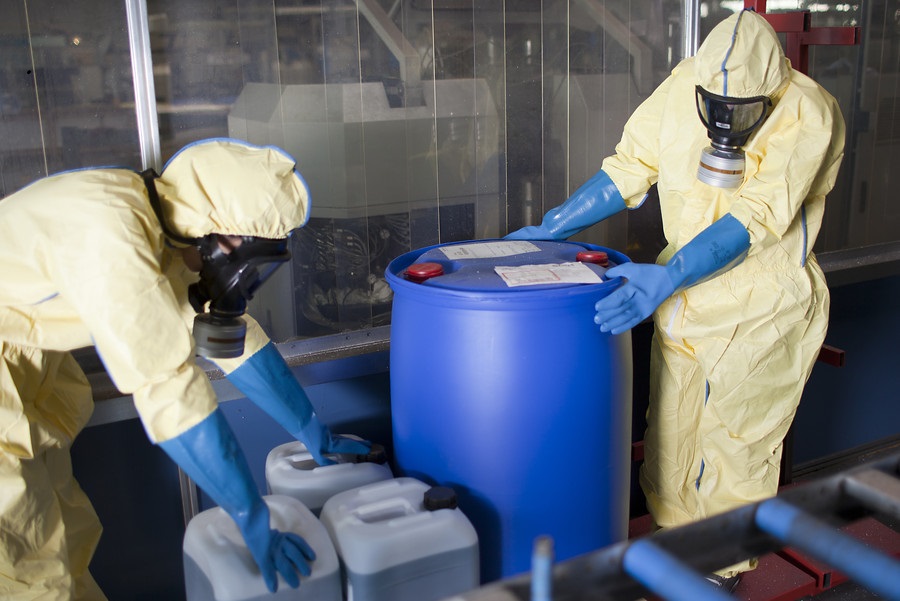Each state is interested in high rates of labor productivity of existing labor resources. To this end, a comprehensive policy aimed at improving working conditions. One of the areas of such activity is the assessment of the prevailing conditions at a particular enterprise. They affect the health, well-being, productivity of staff. In this case, the hygienic classification of working conditions is taken into account.
General concept
Hygienic classification of working conditions is a collection of rules and norms necessary for conducting an assessment to determine the presence of harmful factors at the workplace. This will allow us to develop a range of measures to reduce their impact on staff, which in the future leads to increased productivity, labor safety, while maintaining health and working capacity. If it is completely impossible to eliminate the adverse effect, then at least its harmful effect on people is minimized.

The hygienic classification of working conditions in the Russian Federation is approved by the Chief State Sanitary Doctor. Management, in accordance with which the assessment is carried out, is assigned number P 2.2.2006-05. This document allows you to evaluate the conditions in which employees work. Such work pursues several goals simultaneously.
Hygienic classification of working conditions (SanPiN 2.2.2776-10) is used to monitor the situation in which employees work. Based on the study of all work factors, a conclusion is issued on the extent to which the conditions comply with the established standards.
With the implementation of such an assessment, it becomes possible to establish which department, workplace needs to conduct recreational activities in the first place. An analysis of their effectiveness is also carried out.
Assessment work is also carried out with the aim of compiling a data bank. It stores information about the conditions at a particular workplace, department, workshop or unit. Information is also collected on the enterprise as a whole, by industry, district, city, republic and federation.
After the organization procedure, labor protection certificates are issued, administrative measures are taken in the presence of sanitary offenses. Perpetrators are brought to disciplinary or criminal liability.
Working conditions are compared with the employee’s state of health. For this, periodic medical examinations are conducted in parallel, and sanitary and hygienic characteristics are compiled. Cases of occupational diseases, poisoning are being investigated.
Criteria
Each state has its own criteria for assessing working conditions. However, common features are inherent both to the standards of the Russian Federation and other countries. In Belarus, the regulatory framework for such a process is SanPin 13-2-2007 “Hygienic classification of working conditions”.

The guidelines for conducting such an assessment establish the criteria on the basis of which the study is conducted. They allow us to characterize the degree of deviation of existing conditions from normative. In other words, hygiene criteria are indicators that allow those responsible to make an analysis.
The established norms are the boundary that separates the permissible and unacceptable working conditions. During the study, the information collected is compared with them. The determination of deviations is the main technique in almost all cases.The only exceptions are works related to pathogens of infectious diseases, as well as substances that require exceptional contact with the skin or inhalation. In this case, working conditions can be attributed to a special class of harmfulness.
The hygienic classification of working conditions in the Republic of Belarus and the Russian Federation suggests that certain criteria are applied for each type of production, organization. They are associated with the features of the implementation of the main activities of the organization, the type of workplace and a number of other factors. There are several main types of harmful factors. They are stipulated in sanitary norms and rules, being criteria for assessing human impacts in the process of his professional activity.
Harmful factors
An extensive concept is occupational health. The hygienic classification of working conditions allows you to accurately determine under what conditions a person works, how much harmful factors influence him (if any). A number of criteria are used for this. Responsible persons during the audit assess what harmful factors exist in the workplace.

Such effects include factors:
- Physical.
- Biological.
- Chemical.
- Labor process.
Each of these factors includes a number of indicators. Based on their summation, a general assessment of working conditions is determined.
Physical factors include a whole range of influences that can affect a person during the labor process. These include:
| Humidity |
| Air movement |
| Infrared radiation |
| Electromagnetic and electrostatic fields |
| Power frequency magnetic, electric fields |
| Radiation |
| Temperature |
| Electromagnetic impulses |
| Ultraviolet, laser, ionizing radiation |
| Production noise |
| Infra-or ultrasound |
| Vibration |
| Dust, aerosols |
| Inadequate lighting, non-compliance |
| Charged electric air particles |
The sanitary-hygienic classification of working conditions is a certain scale, which allows you to determine the severity of such effects. First, the level of influence of each individual factor is evaluated, and then their combination. In addition to physical adverse factors, there are a number of other effects. If the features of the labor process suggest their possible presence, responsible persons also take them into account in the research process.
Chemical, biological factors

Considering the principles of hygienic classification of working conditions, it is worth noting a number of other criteria on the basis of which a conclusion is made about the adverse factors of the workplace. It can be chemical effects on humans.
During the performance of his professional duties, an employee can inhale, receive through the skin or in other ways harmful substances to health. They can exert a certain force. Some substances are able to accumulate in the body, leading over time to the development of occupational diseases. Such substances include a variety of chemicals, drugs, mixtures. A person can contact with their various aggregate states.
Chemical substances also include some substances of biological origin. It can be vitamins, hormones, antibiotics, protein-based drugs, enzymes. Such substances are obtained during chemical synthesis. Substances for the control of which certain analysis methods are used can also be considered harmful to health.
Hygienic standards and the classification of working conditions are also used to assess the degree of exposure of workers to biological adverse factors.These include living cells or spores that may be contained in bacterial preparations, as well as microorganisms that are classified as producers. Biologically unfavorable factors include microorganisms that can cause infectious or other diseases.
Adverse factors in the labor process may be a high workload or tension of the employee during the performance of their professional duties. Special methods are used to evaluate this criterion. They determine the number of procedures performed by the employee per shift, their nature and features are evaluated.
Some nuances of the assessment
Considering the general principles of hygienic classification of working conditions, it is worth noting some of the nuances of this process. So, the responsible persons in the course of the study determine how hard and hard work the employee performs. These are two completely different concepts that allow you to look at the object of study from different angles.

The severity of labor is the evaluation criterion, which reflects the load mainly on the joints, spine, as well as other body systems. This is a physical stress that dynamically affects the body. In this case, the weight of the weights that a person lifts and moves, as well as the total number of movements of the same type, can be estimated. The nature of the working posture, the static load, the depth and frequency of inclinations are investigated.
Under the intensity of labor understand the load that affects the nervous system of a person, as well as his organs of touch, smell, etc., the emotional sphere. This category includes a number of factors:
- sensory;
- intellectual;
- emotional;
- monotone;
- mode of operation.
Hygienic assessment and classification of working conditions are developed taking into account the 8-hour working day. If shifts are longer (but no more than 40 hours a week), the possibility of employees working on such a schedule should be agreed in each case with the supervision service in the field of consumer protection and human well-being. This takes into account the health indicators of an employee holding a similar position. Complaints regarding working conditions are also taken into account.
Hygiene Class
There is a special classification of working conditions according to hygienic criteria. Four classes of hygiene conditions stand out. Each of them is a summary indicator of the study of working conditions. After the assessment, the responsible persons issue an opinion on the assigned class. Working conditions may be:
| First grade | Optimal |
| Second class | Valid |
| Third class | Harmful |
| Fourth grade | Dangerous |
Moreover, the third class is subdivided, in turn, into four degrees.
The optimal conditions are those under which the employee's health is fully maintained. At the same time, appropriate prerequisites are created to maintain high working capacity. For conditions to correspond to the first class, they must comply with all the parameters of the permissible load. Also, optimal circumstances may be called such circumstances in which adverse effects on the body are absent altogether or do not exceed the established norm.
Favorable environment

Hygienic evaluation criteria and classification of working conditions are taken into account in the process of conducting a study of hazardous production factors. On their basis, verification can assign a second class to the workplace. These are permissible conditions, that is, such environmental factors in which the employee performs his professional duties, while not being exposed to harmful influences. Hygienic standards establish the boundary to which conditions can be considered permissible.
It should be noted that certain factors can influence the body of a worker. They can lead to a change in the state of health, but at the same time, strength and well-being are restored after the set rest schedule. Also, such factors cannot have an adverse effect in the near or long term on the health of an organization employee. Allowable conditions are considered conditionally safe.
Unsafe conditions
The existing classification and hygienic assessment of working conditions according to established criteria defines the third class as harmful or unsafe. In the course of its activities, the employee is exposed to various adverse effects. Their level exceeds established standards. Such effects can harm the worker’s body or offspring.
This class is divided into four degrees. They differ in the nature of the severity of adverse effects. The changes that occur in the human body under the influence of similar factors are taken into account.
The first degree is characterized by the presence of such deviations that cause changes of a different nature in the human body. However, health resumes after a long rest, interruption of contact with adverse effects. At the same time, there is still a risk of harming human health, albeit over time.
The second degree is dangerous factors that can lead to lasting changes in the body of the worker. In most cases, they lead to the occurrence of an occupational disease, which is accompanied by a loss of ability to work, an increase in the incidence rate. Occupational diseases caused by the adverse effects of this group of factors arise primarily in those organs, systems that come into contact with harmful substances.
The second degree is characterized by the rapid appearance of the initial signs of occupational disease, as well as its mild course for a long time (often after 10-15 years).
In the classification of working conditions according to hygienic criteria, a third degree is also highlighted. It is characterized by such a state of the working environment, the impact of which leads to the appearance of mild and moderate forms of severity of occupational diseases. In this case, disability in the course of labor activity is possible. There is a risk of developing chronic occupationally-caused diseases and pathologies.
The fourth degree is assigned to such working conditions under which there is a high probability of developing severe forms of occupational diseases that are accompanied by general disability, and the organization has a high incidence rate.
Hazardous conditions

Hygienic assessment criteria and the classification of working conditions also make it possible to assign a fourth class to some industries. These are the most dangerous or obviously extreme conditions that are present in the work environment. Even the influence of such factors during the whole shift may pose a threat to the health or life of the employee. At the same time, there may also be a risk of developing acute occupational pathologies or diseases.
Typically, when determining a class, qualitative changes in the body are taken into account. However, they are supplemented by quantitative factors. The collection of such information is carried out gradually. At the same time, information about the risks of employee health problems is recorded.
Legislation
Hygienic classification of working conditions allows you to determine how much the employer fulfills the requirements established by law. Work in harmful and dangerous conditions is a violation of a number of laws of the Russian Federation. This is the reason for the application by the regulatory authorities of sanctions within their powers for violation of the requirements of SanPiN.
It happens that an employer cannot provide a sufficiently safe working environment for its employees for justifiable reasons. In this case, according to the hygienic classification of working conditions, they are defined as harmful or dangerous. But the company, represented by specialists from the labor protection department, is obliged to create, as far as possible, safe conditions for the health of the employee.
This implies that the employer must develop and conduct a series of measures to create comprehensive protection for the health and life of the employee. Such actions include sanitary-hygienic, organizational, restrictive and other measures.
An employee has the right to receive real information about the conditions in which he carries out his activities. Training, lectures, explanatory work in the field of labor protection are carried out. The task of the employer is to create the most safe working conditions for each employee of the organization.
Having considered the main criteria for hygienic classification of working conditions, their purpose and features of application during the assessment of harmful factors, we can note the great importance of the approved regulatory document. On the scale of individual industries, their divisions, and the whole country, labor standards make it possible to control the characteristics of the environment in which employees work. By creating the most acceptable conditions, high productivity can be achieved along with a decrease in the overall incidence.
